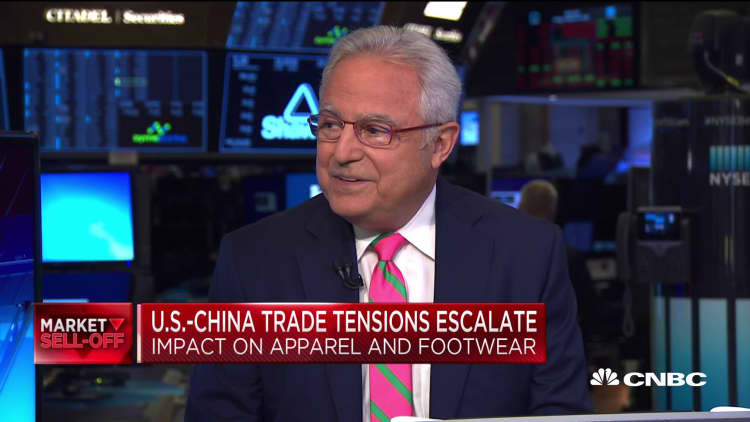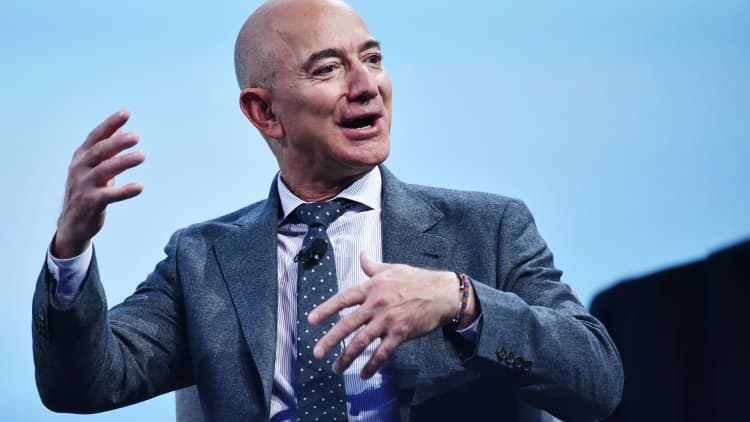Moody's Investors Service is predicting slower growth ahead for retailers, as price wars and big investments weigh on profits.
The debt rating agency cut its operating profit growth forecast for the year to between 2% and 3% from a prior estimate of 5% to 6% growth. In 2018, retailers posted a strong 4.9% growth rate. Moody's expects sales to rise between 3.5% and 4.5% from a prior estimate of 4.5% to 5.5% this year.
Intense competition and the cost of integrating e-commerce with brick-and-mortar stores is hurting the industry's performance, Moody's said. It also cut its outlook for the sector to stable from positive.
Retailers are engaging in pricing wars and investing in e-commerce capabilities as they battle for market share, Moody's said in a report. Apparel, footwear, specialty retailers and department stores continue to underperform.
"The competitive landscape is becoming very, very challenging," said Mickey Chadha, a vice president at Moody's. "The small guys that are facing a lot more competition aren't keeping up with the pricing pressure and aren't doing as well."
Most retailers are investing a lot of money into e-commerce platforms and adjusting their brick-and-mortar stores to a changing shopper. Take, for example, a store that is 60,000-80,000 square feet, the report said. The company likely doesn't need a store that large, but if it doesn't want to close the store, Chadha said, they can use part of it as a warehouse.
"Just closing a store randomly actually could hurt you as a retailer," Chadha said. "Because as e-commerce and brick-and-mortar are integrating towards one channel where you're agnostic as to where you buy, a store does offer some compelling reasons to be there because you can buy online and pick up in the store or if you buy online, you can return in the store."

Walmart, Target and Best Buy are examples of retailers doing the integration of e-commerce and brick-and-mortar well, Chadha said. This is because they all have multiple ways customers can make purchases, including ordering online and picking up in the store and bypassing the stores by getting direct deliveries from warehouses.
"Amazon has driven a lot of the competition pressure because they come out with a new delivery mechanism or new delivery time frame and everyone else, to compete, does the same," Chadha said. "It always takes money."
Online retail sales will make up 20% of total retail sales in the next four to five years, compared with the roughly 15% it makes up today, Moody's analysts expect.
Trade tensions also cause concern for retailers, as many of them — including those selling apparel, footwear, electronics, toys and tools — source products from China. The Trump administration's latest round of tariffs took effect in early September, and another round is expected mid-December. Tariffs hit smaller companies hardest.
"The larger companies do have a lot more bargaining power with their vendors and are pushing back," Chadha said. But the smaller companies that get products from China will definitely see an impact, he added.

Retailers are also challenged by the rising cost of labor as the unemployment rate continues to fall. The nonfarm payrolls rose by 128,000 in October, the Labor Department reported Friday, beating expectations.
But strong job growth does mean rising consumer confidence — good news for retailers.
Some sectors had a good year. Moody's said some of the best performers in 2019 were discount and warehouse clubs, supermarkets, off-price and auto part retailers. The rating agency expects these sectors will boost performance in 2020.
"Overall the picture is still not dire," Chadha said. "But we're just lowering our forecast to say, 'Well, we're coming off of some good performance and now the pricing pressures are definitely intense and everyone is competing for market share.'"


